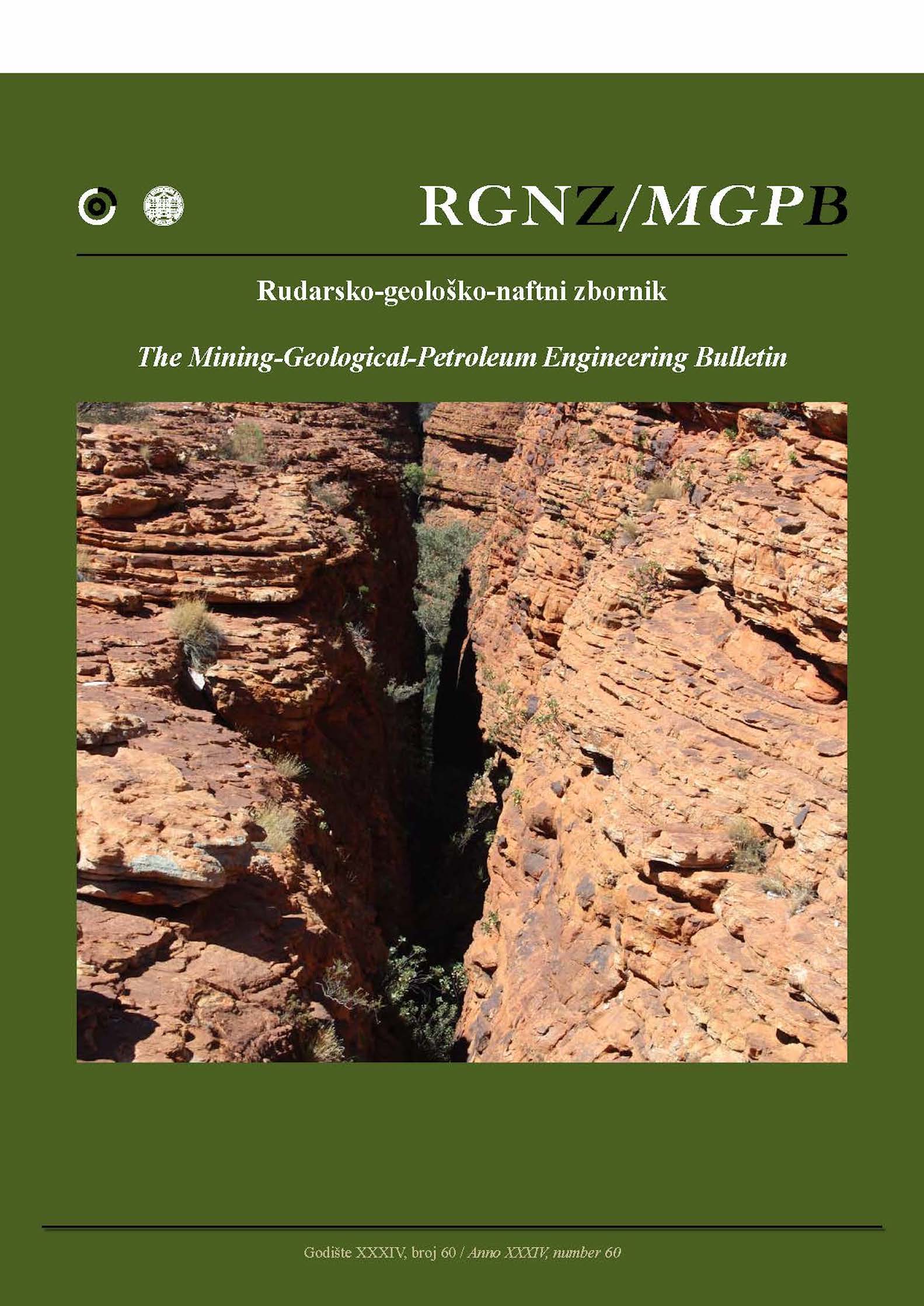Equivalent Geological Strength Index (GSI) approach with application to rock mass slope stability
DOI:
https://doi.org/10.17794/rgn.2022.4.5Keywords:
Scale effects, GSI, Rock mass, Rock mechanics, Slope stability, geomechanical characterizationAbstract
A considerable amount of slope stability analysis has been observed in jointed rock masses in which the GSI (Geological Strength Index) estimated at the outcropping level is considered input data to define the rock mass strength. However, this procedure is unsuitable when the rock outcrop scale and the slope scale are significantly different (e.g. open-pit slopes), resulting in an overestimated rock mass strength. For this reason, and in the absence of criteria to modify the GSI based on the scale effects, in this research, a new GSI version is proposed, called GSIe or “equivalent GSI”. To define an expression for obtaining the GSIe in terms of the rock mass properties, comparative stability analyses were conducted in a series of hypothetical slopes using two approaches: the first considers the rock mass as a discontinuous medium of rock blocks separated by discontinuities; the second considers the rock mass as an equivalent continuous medium characterized by an equivalent GSI. For the adequate equivalent GSI value, evaluated in each analyzed slope, the safety factor and the failure surface are similar in both approaches. In conformity with the results, a GSIe formulation in terms of the slope height, the spacing, the intact rock strength, the persistence, and the joint conditions has been proposed. Finally, the formulation was validated by applying it in five cases of mining slopes where the failure occurred.
Downloads
Published
How to Cite
Issue
Section
License
Copyright (c) 2022 authors and journal

This work is licensed under a Creative Commons Attribution 4.0 International License.
Creative Commons-BY
Authors who publish with this journal agree to the following terms:
In agreeing this form, you certify that:
- You read the ethical codex of the RGN zbornik available at journal web.
- You submitted work is your original work, and has not previously been published and does not include any form of plagiarism.
- You own copyright in the submitted work, and are therefore permitted to assign the licence to publish to RGN zbornik.
- Your submitted work contains no violation of any existing copyright or other third party right or any material of an obscene, libellous or otherwise unlawful nature.
- You have obtained permission for and acknowledged the source of any illustrations, diagrams or other material included in the work of which you are not the copyright owner.
- You have taken due care to ensure the accuracy of the work, and that, to the best of your knowledge, there are no false statements made within it.
- All co-authors of this submitted work are aware of, and in agreement with, the terms of this licence and that the submitted manuscript has been approved by these authors.
Publication licence
You retain copyright in your submitted work, according to journal license policy (CC-BY). By signing this form you agree that RGN zbornik may publish it under the publication licence. In summary the licence allows the following:
Anyone is free:
- To copy, distribute, display, and perform the work.
- To make derivative works.
Under the following conditions:
- The original author must always be given credit.
- The work may not be used for commercial purposes.
- If the work is altered, transformed, or built upon, the resulting work may only be distributed under a licence identical to this one.
Exceptions to the licence
In addition to publishing the work printed under the above licence, RGN zbornik will also enable the work to be visible online.
The journal editorial can change the licence rules anytime but it cannot retroactively restrict author(s) rights.


